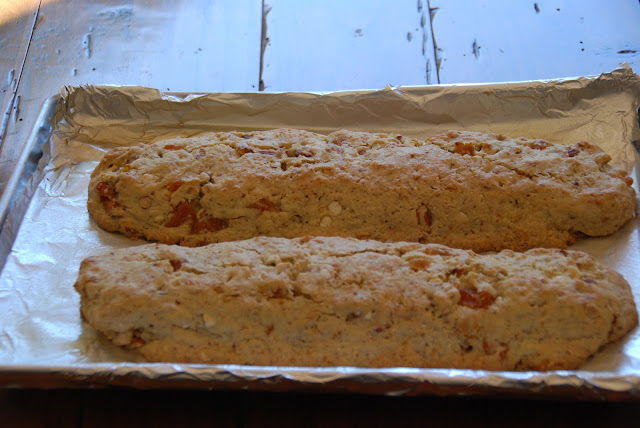 |
| Duck Breasts with Honey & Balsamic |
The incredible photos for this post were done with the help of Carl Kravats. He is a true food photography artist, and I had an opportunity to take a class from him recently. For more information, see www.carlkravats.com.
For inexplicable reasons, I shied away from cooking duck for many years. I think I thought it was difficult to do. It certainly is not – or, at least not duck breasts. This one looks difficult, but it is a quick and easy mid-week or special guest dinner. In addition, duck is an excellent, lean source of protein as well as iron, selenium and niacin. For some reason, duck has gotten a bad “rap” through the years. Yet, it is comparable in fat and calories to a skinless chicken or turkey breast.
One of the keys to an excellent duck breast is crisping the skin properly, resulting in both great flavor and texture. The first step is to score the skin (see below) and season in advance, preferably 12 hours before cooking. In this dish, the breast gets what amounts to a cure, rich with spices, aromatics, and citrus. The second important step is cooking the breasts very slowly, over medium heat, skin side down, to render out the fat, pouring off the fat as they cook. When the skin is crisp, about 20-25 minutes, it’s simply a matter of briefly cooking the flesh side so that the meat is medium-rare.
With the fatty skin-side up and using a sharp knife, cut ¼ - ½ -inch crosshatch pattern in the skin of 4 duck breasts being careful not to pierce the meat. Do this while the duck is cold, since its difficult to make precise cuts at room temperature. Turn the duck breast over. Using a sharp knife, carefully trim excess fat from the meat side. If the tenderloins (the smaller piece of meat that runs along the bottom of the breast) are still attached, leave them on the breasts. Use a sharp paring knife to remove the small white tendon that runs through the tenderloin. You will see a vein that runs the length of each breast. Run your finger down the length of each vein, and if any blood comes out, wipe it away with a paper towel.
4 duck breasts
Salt & pepper
Grated orange zest
Grated nutmeg
Balsamic vinegar
Thyme
Bay leaf
1-2 Tb canola oil
3 Tb chestnut honey
2 tsp soy sauce
½ tsp optional fennel pollen
4 duck breasts
Salt & pepper
Grated orange zest
Grated nutmeg
Balsamic vinegar
Thyme
Bay leaf
1-2 Tb canola oil
3 Tb chestnut honey
2 tsp soy sauce
½ tsp optional fennel pollen
 |
| Cutting a cross hatch pattern on the duck |
 | |
|
Season the flesh (meaty) side with salt & pepper, grated orange zest, grated nutmeg, and a sprinkle of balsamic vinegar. Lay a sprig of thyme running lengthwise down the center of each breast and cover with one bay leaf. Turn over and season each breast with a generous pinch of salt and a grating of nutmeg. Refrigerate, uncovered, for at least one hour, or up to 12 hours.
Heat non-stick frying pan over medium-low heat. Add 1-2 Tb canola oil. Set a metal bowl or other container near the stove. With a paper towel, blot any moisture from the duck breasts. Remove and toss thyme and bay leaves. Season both sides of each breast with a pinch of salt. Add the duck to the pan, skin-side-down. Move the duck breasts every few minutes to help them brown evenly. As the fat is rendered, carefully tilt pan remove the excess with a metal spoon (leaving about <1/8-inch) from the frying pan: Be careful to remove pan from the flame while doing so to avoid flare-up. Transfer fat to metal bowl. (save it – great to use later with vegies!) Cook the duck for a total of 20-25 minutes, until the skin is an even rich brown and very crisp. You may need to press the meat down to the pan so skin remains flat.
 |
| Rendering the fat and scooping it up! |
 |
| Crispy skin |
Put the duck breasts skin-side-down on a cutting board, loosely place foil on top, and let it rest 5-10 minutes. Remove all fat from frying pan. Add 3 Tb chestnut honey, 2 tsp soy sauce, ½ tsp optional fennel pollen and 1 tsp balsamic vinegar. (one can substitute with your favorite honey should chestnut honey not be available) Mix.
Put duck breast back into pan and coat with mixture. Deglaze with 2 Tb balsamic vinegar. Remove duck breast, slice on the diagonal into about 3-4 slices. Drizzle sauce over meat and around plate. Serve. Now you can see how truly easy it is to make duck breasts. Give it a try – you will be so glad you did. Serve with a wonderful Merlot or California Pinot Noir for the classic pairing. Sublime!
This recipe is a modification on a Duck Breasts with Chestnut Honey - which was shared with me in a cooking class a few years ago in Nice, France. Many thanks to Rosa Jackson and her wonderful French cooking classes.http://www.rosajackson.com/
This recipe is a modification on a Duck Breasts with Chestnut Honey - which was shared with me in a cooking class a few years ago in Nice, France. Many thanks to Rosa Jackson and her wonderful French cooking classes.http://www.rosajackson.com/
Enjoy!
Larue
Larue





























